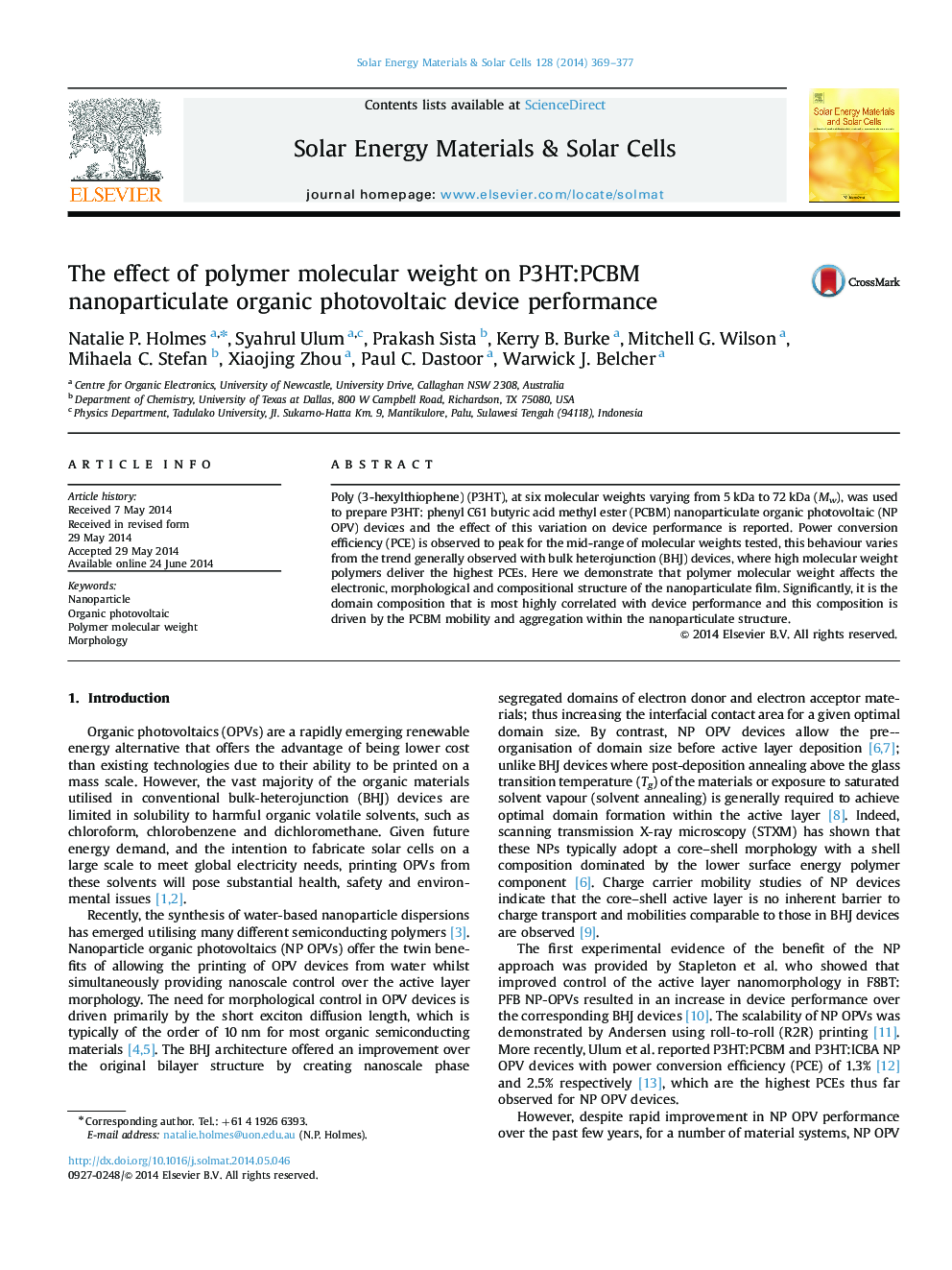| Article ID | Journal | Published Year | Pages | File Type |
|---|---|---|---|---|
| 78012 | Solar Energy Materials and Solar Cells | 2014 | 9 Pages |
•NP OPVs enable water processability and nanoscale control of morphology.•Fabrication of efficient NP OPVs is influenced by polymer molecular weight (Mw).•Electronic, morphological and compositional structure of NP layers vary with Mw.•The core–shell NP structure further complexes the phase segregation process.•NP shell composition is observed to correlate with device performance.
Poly (3-hexylthiophene) (P3HT), at six molecular weights varying from 5 kDa to 72 kDa (Mw), was used to prepare P3HT: phenyl C61 butyric acid methyl ester (PCBM) nanoparticulate organic photovoltaic (NP OPV) devices and the effect of this variation on device performance is reported. Power conversion efficiency (PCE) is observed to peak for the mid-range of molecular weights tested, this behaviour varies from the trend generally observed with bulk heterojunction (BHJ) devices, where high molecular weight polymers deliver the highest PCEs. Here we demonstrate that polymer molecular weight affects the electronic, morphological and compositional structure of the nanoparticulate film. Significantly, it is the domain composition that is most highly correlated with device performance and this composition is driven by the PCBM mobility and aggregation within the nanoparticulate structure.
Graphical abstractFigure optionsDownload full-size imageDownload as PowerPoint slide
